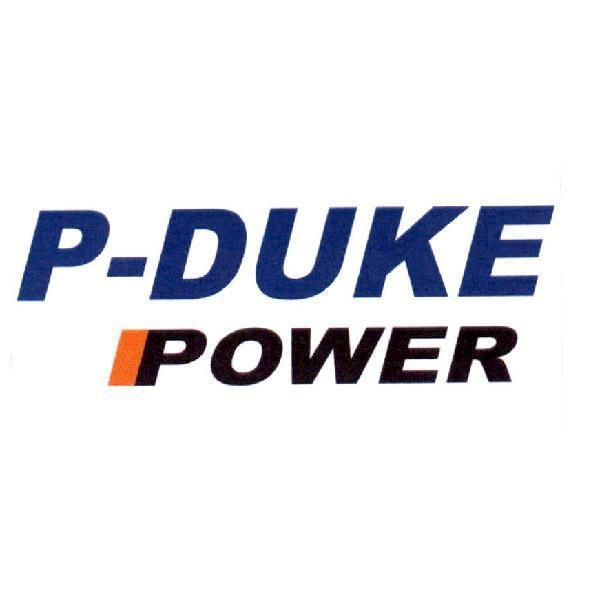[ad_1]
//php echo do_shortcode(‘[responsivevoice_button voice=”US English Male” buttontext=”Listen to Post”]’) ?>
When the post-COVID-19 era comes, the DC-DC converter applications will span a wide range of industries, including consumer electronics, medical, telecom/datacom, industrial, automotive, and railway rolling stock. The current growth at nearly 12% CAGR is accompanied by a strong push to save space, time, and cost toward application development.
But besides the points of industrial demands driven by economic recovery, it’s also important that suppliers have a history in continued product development as well as a quality management system (QMS) in place that is preferably certified to globally recognized standards. The supplier must also offer a broad enough range of products to cater to changing project designs as well as changing application requirements.
As a stable and active player in this field, P-DUKE Technology, Inc., founded 1992, is one such company that sells to Europe, the U.S., and Japan, capitalizing on investments in R&D, quality control, and test. With “global logistics, local management”-driven operations, it has ISO 9001 and ISO 13485 certification for its QMS and ISO 14001 Environmental Management Systems as well as safety approvals from UL and CE.
The company’s continued product development saw the introduction of numerous products throughout last year, including 2 W medical-grade and 12 W industrial DC-DC converters, extending the lineup to 300 W. In the next paragraphs, we will learn more functional details about P-DUKE’s products.
Growing converter portfolio
P-DUKE has further expanded the DC-DC power module portfolio with the introduction of several products for the railway, industrial/automation, medical, datacom/telecom, and test & measurement applications. These include HAE200W, MPQ60W, RED60W, RHD40W, and RCD30W, covering a wide output power range of 30 to 200 W.
All new converters offer a wide 4:1 input range as indicated by the “W” for “wide” in the model numbers, implying the maximum input voltage is 4X minimum. The new series all feature protection from overcurrent (OCP), overtemperature (OVT), output overvoltage (OVP), short-circuit (SCP), and input undervoltage lockout (UVLO), and have a no-minimum load requirement.
HAE200W: These 200 W isolated DC-DC converters meet the requirements of several applications, including industrial and datacom/telecom, but are specifically qualified for railway rolling stock. Their EN 50155 certification covers, among various parameters, suitability of temperature, humidity, shock and vibration, and the EN 45545 compliance ensures fire safety in railway applications. They also comply with the new IEC/EN/UL 62368-1 standard that superseded the IEC 60950-1 for ICT and IEC 60065 for A/V equipment and incorporated Hazard-Based Safety Engineering (HBSE) principles. Models with the “TF1” assembly option offer an integrated filter for EMI EN55032 Class-A compliance.
Models in this series cover input voltage ranges of 8.5-36, 9-36, 16.5-75, and 43-160 VDC. The HAE200W offers output power of up to 255 W; efficiency up to 93%; adjustable single-output voltages of 3.3, 5, 12, 15, 24, 28, 48, and 53 VDC; I/O isolation voltage: up to 3,000 VAC reinforced insulation; and operating case temperature range of -40°C to +115°C, all from a fully encapsulated, industrial-standard 2.4 x 2.28 x 0.5-inch half-brick footprint. Heatsink- or chassis-mounting options are offered.

MPQ60W: This 60 W DC-DC converter targets medical applications, among others, with compliance to the IEC/EN 60601-1 / ES 60601-1 standards. The IEC 60601-1 specification includes the Means of Patient Protection (MOPP), which at its most stringent protection, 2xMOPP, provides two layers of insulation, 4000 VAC of isolation, and 8 mm creepage and clearance distances. The MPQ60W, with its 5000 VAC reinforced 2xMOPP insulation and <4.5 µA leakage current, provides the level of power supply isolation required by the highest of medical equipment classifications — the CF (cardiac floating) type for physical contact with the patient heart.
Models in the series cover input ranges 9-36 VDC and 18-75 VDC. Other key specifications include:
- Working voltage: up to 250 VAC
- Efficiency up to 92.5%
- Leakage current: <4.5 µA
- Quarter-brick package
- Operating altitude: up to 5000 m
- Operating temperature range: -40°C to +105°C

RED60W: A 60 W output series compliant with the EN 50155 and EN 45545-2 railway standards and IEC/EN/UL 62368-1, it has models with input ranges 9-36, 18-75, and 36-160 VDC and adjustable output voltages 3.3, 5, 5.1, 12, 15, 24, 48, 53, ±12, ±15, ±24 VDC. The RED60W offers up to 94% efficiency and features 3000 VDC input-to-output isolation for 110 Vin and comes with a six-sided continuous-shield industry-standard 2 x 1 x 0.4-inch package.
RHD40W: The 40 W models have a built-in EN 55032 EMI Class-A filter and offer 36-to-160 VDC input range, adjustable output voltages 5, 5.1, 12, 15, 24, ±12, ±15 VDC, and efficiency up to 90%. Offering an operating altitude up to 5000 m and 3000 VAC input-to-output reinforced insulation, the series is also certified to EN 50155, EN 45545-2 railway standards and IEC/ UL/ EN 62368-1.
RCD30W: The 30 W series comes in a tiny 1 x 1-inch industry-standard package. Models offer input voltage range options of 9-36, 18-75, and 36-160 VDC, adjustable output voltages 3.3, 5, 5.1, 12, 15, 24, 54, ±12, ±15, ±24 VDC, while they all feature an operating temperature of -40°C to +105°C with an optional -55°C lower limit and operating altitude of up to 5000 m. The series complies with EN 50155, EN 45545-2, and IEC/EN/UL 62368-1 standards and offers options for input-to-output isolation of 2250 VDC and 3000 VDC.

Increasing power density
In addition to improving the performance of power modules, size miniaturization is also an important trend in related designs. However, higher thermal density has accompanied the higher power density. It’s obviously a factor that cannot be ignored which designers have not only had to look toward increasing efficiency but installing cooling infrastructure on key heat-generating components and modules to quickly dissipate thermal energy.
To address these challenges, P-DUKE has not only addressed the requirement to shrink the size of power boards and PSUs but also upgraded many of the heatsinks that fit its industry-standard packages. The new heatsinks — HS, HC1, HC2, and HC3 — have fins that are designed and sized for significantly better temperature adaptation, as shown in Figure 4.

The above is just the overall description of P-DUKE’s products and their technical features. If you are interested in finding a DC-DC converter and heatsink solution for your application, please visit P-DUKE.com. P-DUKE also offers AC-DC power supply solutions for industrial and medical applications in the range of 15 W to 500 W.
[ad_2]
Source link

